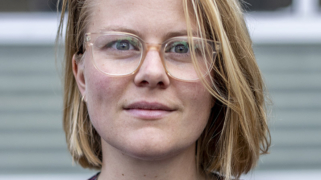Re-inventing the wheel
Kennislands visiting scholar Sarah Schulman buigt zich over de voor KL zeer relevante vraag: hoe weten we dat wat we doen ook echt waarde toevoegt? In het geval van Kennisland: maken we Nederland echt slimmer door wat we doen? Doen we genoeg goede dingen om het geld dat daaraan besteed wordt te rechtvaardigen? En wat is goed doen eigenlijk en wie bepaalt dat? Vragen, die op zijn tijd zeker gesteld moeten worden.
Klik hier voor links naar alle artikelen van haar hand op de KL-site.
Re-inventing the wheel
Ideas are not inventions. And inventions are not innovations.
I spent last week in the company of 30 winning ideas. Some sparkly; some small; some suitably ambitious. There was a crowd funding tuition platform. A mathematical algorithm to enable bartering. A job sharing scheme between older and younger workers. A peer-to-peer network for mums returning to work. All semi-finalists in the European Social Innovation Competition.
I’ve spent the last 5 years trying to turn ideas into inventions: Youth Infusion, Loops, Family by Family, Care Reflect, Weavers. But only 1 of the 5 actually straddles the invention to innovation line.
James Surowiecki of the New Yorker explains: ”Innovators do more than invent. They identify systems in which their inventions can flourish, and if those systems don’t exist they create them.”
Ideas and inventions are the (relatively) easy part. Plenty of methods, toolkits, and design consultancies abound. (Even if most grossly over-simplify their translation into the social sectors, missing such key features as outcomes or ethics). There is Ideo’s Human Centred DesignToolkit; Frog Design’s Collective Action Toolkit; Austin Center for Design’s Wicked Problem Book; and Nesta’s Open Book of Social Innovation. Even the Working Backwards approach I co-developed, whilst a critique of design-led processes, still places emphasis on the invention. On the product, the practice, the service, the platform, the network – the thing – that emerges through bottom-up engagement and active experimentation. The focus isn’t on the systems around the invention.
Indeed, developing the system around the new ‘thing’ – be it the product, practice, service, platform, network – is the hard part. And far more difficult in the social sector where operating outside of existing health, education, or welfare systems too often means neglecting the root cause of the problem, or the primary source of the revenue.
Unlike the introduction of a new tech product (say the iPad) or platform (say App Store) that can displace the old systems by being cheaper, faster, and better, the introduction of a new social service rarely dismantles what’s already there. Cheaper, faster, and better for whom over what time period? The buyers of most social services are not the end users. Buyers have different interests and different time horizons than end users. A preventative health service for the homeless that is cheaper in the long-run is still more expensive in the short-run. A support program for teenage mums may be better for their health & wellbeing, but worse for the election prospects of the conservative politician who must authorize the funding. Politics and ethics always come into play.
Too often, we’ve resisted this reality instead of designing for this reality. Our assumption was that the invention would prompt change. That once people saw the invention with their own two eyes – via a live prototype or a film recounting the experience – we’d win the system over. We’d circumvent the power dynamics & bureaucratic hand-wringing. Of course, it hasn’t really worked that way. Care Reflect, which was developed inside of the system with care workers and frontline managers, is still struggling to be taken up by the system.
Chris Argryis offers one reason why: defensive routines.
“Defensive routines are thoughts and actions used to protect individuals’, groups’, and organizations’ usual way of dealing with reality (p.5).” When we’re confronted with a new way of doing something, our gut reaction is to defend the current approach. Even when we dislike the current approach. We diagnose why something won’t work using evaluations and attributions that have never been tested. We self-censor our discomfort with a course of action, silence our frustrations, or better yet, kick and scream.
I’m all too familiar with defensive routines. We probably all are. They don’t just pop up in the system. But in every system. They were a constant companion this past year at The Australian Centre for Social Innovation. Even in organizations with an ‘innovation’ remit, we battle against our own and others’ egos, insecurities, and defenses. Research shows defensive routines are common amongst men, women, minorities, majorities, young, old, wealthy, and poor in India, the US, South America, Europe, and Australia. That’s because each of us have implicit theories about how things work (if I do ‘x’, ‘y’ will happen). These theories are shaped by our upbringing, our culture, the structures and norms around us. New ideas and inventions will always rub against our existing theories. But since our theories aren’t explicit, it’s hard to name the tensions and resolve the real conflicts. Plus, there’s rarely time or space for vulnerability. Too often it’s deemed ‘unprofessional’.
For a while, we kept it ‘professional.’ We avoided real conflict. Resources were abundant, the organization had political cover; our work was perceived as new and exciting. But, then, conditions changed. Abundance became scarcity.
“Every time I dig into the histories of attempts to change organizations significantly, I find that during the early stages, especially with the help of a driven charismatic leader and financial resources, changes are made,” Argryis notes. “The problems arise when players begin to face dilemmas, paradoxes, and threats; that is, when defensive routines come into play. The knowledge and competencies people have to deal with them are not only inadequate but also create regressions to the status quo (p.344).”
Amsterdam’s Bureaujeugdzorg (Bureau of Youth Care) gets regression. Big reforms have come and gone, whilst the status quo has remained. So last year, when a team of 10 social workers and managers re-designed how they worked, they didn’t just ‘roll out’ or ‘scale-up’ their inventions. Inventions like weekly reflection sessions; matching social workers with families; convening whole families for conversations; cutting 70% of the paperwork; writing in language families could understand. Instead, they are enrolling the other 390 social workers and managers in the invention process – in a kind of internal laboratory that enables workers to make their implicit theories explicit, to test hunches and try on new perspectives, and eventually to develop their own inventions. It’s the act of inventing – not the inventions themselves – that’s prompting change. That’s enabling workers to reconcile the dilemmas, paradoxes, and threats – and credibly adopt a new way of thinking. And, then, doing.
Linda Elder and Richard Paul think (and write) a lot about thinking. As they put it, “You are what you think. Whatever you are doing, whatever you feel, whatever you want – all are determined by the quality of your thinking.” They argue that because critical thinking is mostly an invisible activity (as opposed to other skills like artistry or athleticism), we don’t get the kind of practice and feedback required to rethink the everyday assumptions and improve our reasoning. They note, “To develop as thinker, you must begin to think of your thinking as involving an implicit set of structures, ‘concepts’, for example, being one important set, whose use can be improved only when you begin to take the tools of thinking seriously….You develop as a thinker as you build your own ‘large screen’ on which to view your own thinking (p.72).”
That’s exactly what the Buurtpraktijkteam (Neighborhood Practice Team) in Stasdeel West (West Amsterdam) are doing. Walk into the second door of the second floor of the freshly painted youth centre, and you’ll be greeted with photos, timelines, and mind maps. Abstract concepts like ‘poverty’ and ‘social inclusion’ are broken down into component parts. Community members and staff are developing a shared understanding, and inventing ways to address the component parts. Inventions like mum-led exercise groups, free healthy lunches, and youth job placements.
While both the Neighborhood Practice Team and the Bureau of Youth Care have found ways to change their own systems, changing the systems around them (police, courts, youth work) has proven tough. Defensive routines are virulent. How, then, can we co-design & prototype inventions to challenge these defensive routines? To allow ourselves to be vulnerable, to be real, and to get underneath the anxieties, the insecurities, the emotions that block change? To re-set feedback loops so new standards and behaviors are encouraged?
We need new methodologies. Methodologies that can work between multiple user groups: be it families, older people, young people, social workers, teachers, managers, politicians. Methodologies that can reset feedback loops & defensive routines within user groups (e.g within a family) and between user groups (e. g between a family and social workers). Yes, I am a firm believer in starting with the end user group. With the families, older people, young people – whoever is directly experiencing the social challenge. But I also see now that’s not enough. That to move our inventions to innovations, we need to co-design and prototype the re-invention process with each of the user groups. Sometimes, you need to re-invent the wheel.
In this piece, I cited…
Chris Argryis. 1985. Strategy, change, and defensive routines. London: Pitman Publishing Limited.
James Suroweicki. 2013. Introduction to the “The next new thing collection 2013.” New Yorker Publishing.
Richard Paul and Linda Elder. 2002. Critical thinking: Tools for taking charge of your professional and personal life. Upper Saddle River, New Jersey: Pearson Education, Inc.
***
These (rather long) blog posts – what I’m calling writing pieces – are the start of a book project called The good, the bad, and the Feedback…. The book seeks to answer the questions: What is good? How do we know? All feedback welcome!







